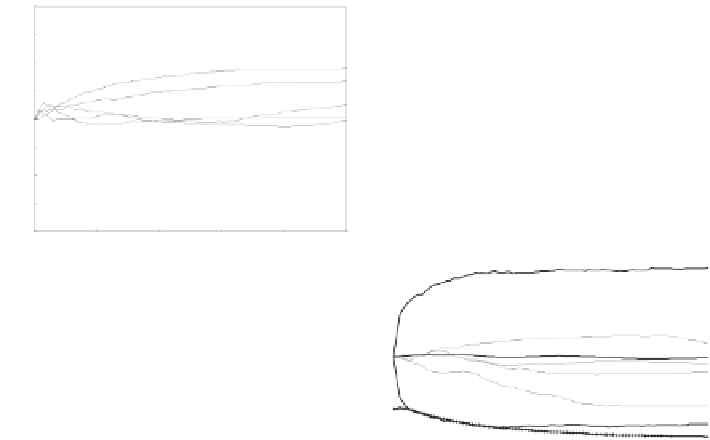Information Technology Reference
In-Depth Information
12
30
11
26
10
9
22
8
18
7
6
14
5
4
10
0
20
40
60
80
100
0
20
40
60
80
100
Generations
Generations
50
50
40
40
30
30
20
20
10
10
0
0
0
20
40
60
80
100
0
20
40
60
80
100
Generations
Generations
Figure 3.12
Solution size evolution for two-bit multiplier problem using uniform
crossover (top) and TR crossover (bottom). Light lines show average genotype sizes
for each run. Dark uncrossed lines show average minimum, average, and maximum
solution sizes across all runs. Dark crossed line shows average phenotype size across
all runs. Minimum optimal phenotype length is seven gates.
inherent evolutionary advantage for smaller solutions. The reason for this is
not yet known, though a speculative explanation is that larger solutions are
less stable than smaller solutions and therefore less able to accurately replicate
during recombination. This instability might lie in a greater presence of poor
specificity-shape matches in large solutions, which, during recombination, are
more likely to be broken and reformed into other interactions. Nevertheless, in
one sense it is an advantage that enzyme GP automatically searches for short
solutions, yet equally, it suggests that large solutions to large problems might
be harder to find.
DISCUSSION
Conceptually, a conventional parse tree can be transformed into an enzyme GP
program by decomposing it into its functional components and translating each
component's context, previously given by its position within the tree, into a
description of the components it was connected to in the tree. The components,
each with its associated context, are then stored in a linear array.












































































































































